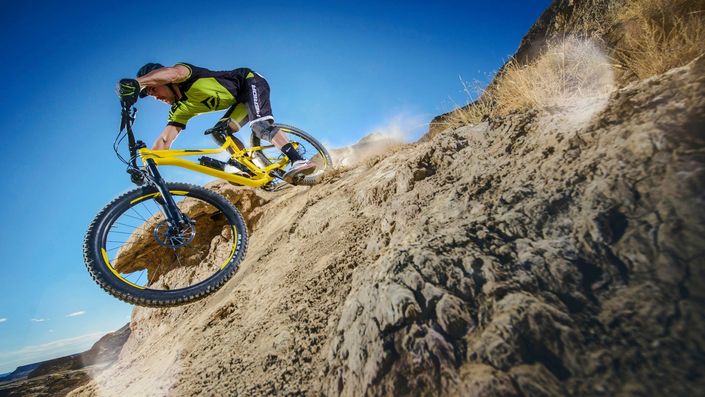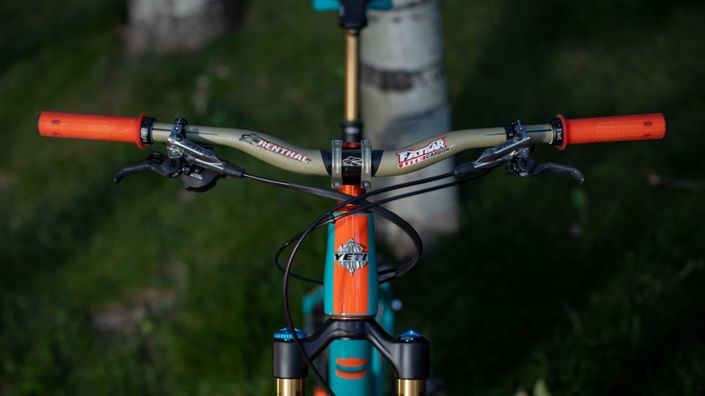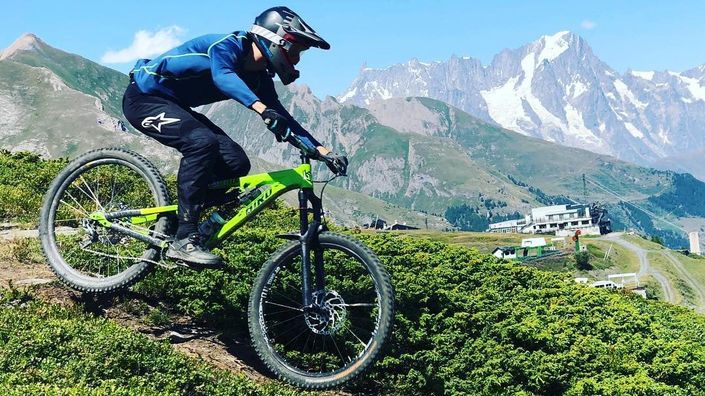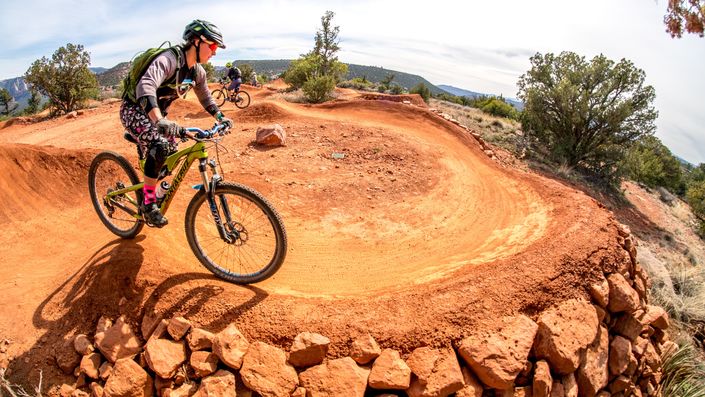Braking on your bike is a crucial skill that can keep you safe and greatly improve the quality of your ride. As easy as braking is to do - just pull the levers - doing it properly is still a mystery to some.
Whether it’s road, MTB, DH, or recreation here are some simple principles to proper braking.
Front = Power | Rear = Control
Most beginner and intermediate riders rely too heavily on their back brake for all their stopping power. Like most times with brakes, the power braking is handled by the front brakes as it’s fully in front of most of your weight. Because of this, you have to know when to use your front brake, how much stopping power to apply, and how to shift your weight. It takes practice and a bit of instinct, and as most riders learn early on, too much brake and you go sailing over your handlebars, and too little and you go sailing off the edge of the trail...
The best way to figure out your front brake is in a soft and mellow place like a schoolyard field. In an open area like this, you can practice variations in speed and braking power and get an understanding of where your body needs to be positioned in hard braking scenarios without the worry of slamming into something or flying off of somewhere.
This doesn’t mean you should fully neglect your rear brake as it is essential in situations where you need to steer and brake at the same time. Your rear brake allows you to keep your bike in control while slowing down. Your rear brake is also better at slowing you down over rough choppy terrain, like rock gardens or root patches, with more control.
Get your body right
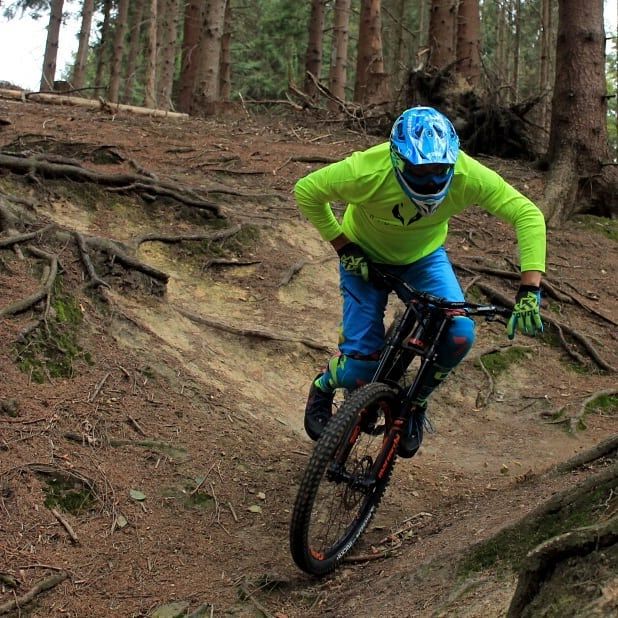
Body position plays a big role in the effectiveness of your brakes, which is something most people don’t think about as their learning about proper braking. If your body is too far forward then you may lose your balance and momentum will send you over your bars, especially if you hit the brakes over rough terrain. Standing too high up can yield the same result, especially if you’re going downhill.
You want to try and lower your center of gravity as you apply your brakes which will help keep your tires hooked up and gripping. However, if you are too far back then it takes away the effectiveness of your front brake, so practice and take your time to find the optimal body positioning at various speeds, terrains, and angles.
Move your body
Once you find the stagnant position that best suits your braking, try moving your body position around in your saddle slightly. This can increase their effectiveness and well as help with grip in corners and over obstacles. The more weight you have over a brake the more grip that wheel will get, so practice swinging your body weight around while braking to see what effects what.
Practice moving your body in corners and over rocks and roots to see how your body position can be altered to result in better braking.
Skids aren’t helping
As much as it hurts my heart to say it, here goes... skids don’t help you brake. I know, I know, they are so much damn fun! But really, they aren’t helping your braking. When your tires break loose they change the trajectory of your bike and can make you a lot slower than you might think. You also lose key grip when you’re skidding, which can result in crashing – lots and lots of crashing. Plus, it’s really awful for your trails as skidding creates ruts and can blow out corners so they have to be completely rebuilt.
Head back to the schoolyard lawn and practice your cornering without braking – it's good for your skills and a hell of a lot of fun! Try seeing how flat and low you can get your bike while cornering. You’re guaranteed to take more than a few spills while doing this, but it’s a heck of a riot and helps you learn just how far you can take it.
Squeeze your brake levers, don’t pull them
One thing most beginners miss is how they’re actuating their brakes. Newbies tend to pull the levers with their fingers rather haphazardly, which locks their wheels up and gives them an insecurity about using them. Advanced riders usually have their fingers hovering over their brakes and will know exactly how hard to squeeze their brakes without much thought. Braking properly should become a muscle-memory reaction or a natural extension of your body, which takes practice. Once again, the mellow schoolyard is a great place to learn this.
Modern brakes are built to have a small amount of neutral actuation as your first begin to squeeze the lever. This dead space allows you to have your lever slightly engaged in anticipation of quick braking. Learn how to use it to your advantage.
Brake before not during
Another sign of a beginner (or poorly learned) rider is someone who comes cruising into a corner and then jams on their brakes right in the middle of it. This causes the rider to lose grip, risk a crash, and is a lot slower than rolling through the corner at the right speed. We’ve touched on this in other articles, so to quickly summarize, you always want to brake before obstacles and allow your wheels to roll freely over them. This applies to corners as well.
Try slowing as much as needed to easily go around the corner, then try slowing a little less and a little less each time until you find the best speed to take the corner at. This skill is absolutely crucial in learning how to brake effectively and quickly.
Check your bike
You may want to give your bike a good once over to ensure that all its mechanical parts are working correctly, including your brakes. Worn brake pads, bent rotors, air in your brake lines, foreign substance on your brake pads, or improper tire pressure can all greatly affect you braking ability.
Take a close look at your pads while they’re in the caliper. Is there any material left? Are they both still in there? Now rotate your wheel and hold your bike off the ground to see if your rotor is straight. Does your lever squeeze all the way to your bars? Are both pads making contact with the rotor? Is the rotor just slipping through them? These are easy signs that your brakes need some professional help.
This may seem like a lot of information, but because braking is otherwise instinctual and reactionary, advice like this tends to stick in your mind. Put the time in trying some new braking techniques in a schoolyard before bringing it to the trails and with little time you will be much quicker and much safer during your rides.

RELATED ARTICLE:
How to save energy while mountain biking
In mountain biking there are plenty of opportunities to waste energy and wear yourself down. Our mountain bike expert sheds some light on ways to minimize energy loss and ride efficiently... READ MORE
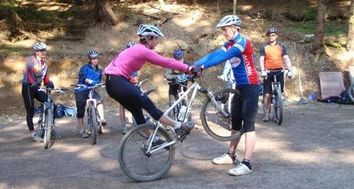
RELATED ARTICLE:
5 Basic mountain bike skills every beginner should learn
Your mountain biking skills constantly develop and improve every time you get on the bike. Here are some areas that may require special attention, but will also transform your abilities... READ MORE
